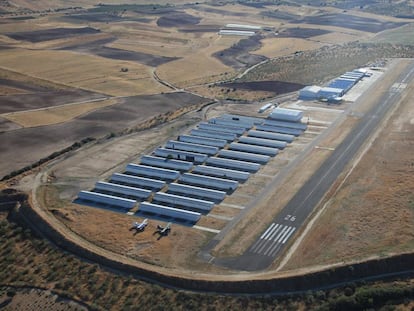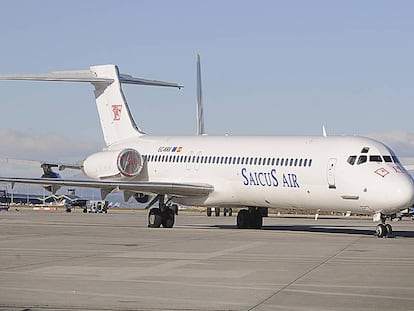Airport authority plans €1.5-billion overhaul for Madrid’s Barajas
The facility manager, Aena, wants to merge Terminals 1, 2 and 3 and to expand Terminal 4 in order to raise potential passenger volume to 80 million

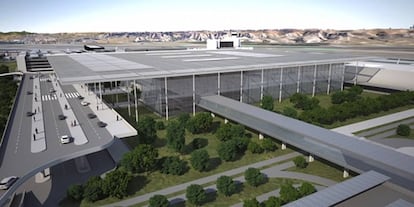
The Spanish airport authority Aena is planning to invest around €1.5 billion in remodeling its Adolfo Suárez Madrid-Barajas facility as part of its 2022-2026 Strategic Plan.
Recently approved by the Aena board of directors, the operation consists of merging Terminals 1, 2 and 3 and expanding Terminal 4 and its satellite 4S to optimize the overall functionality of the airport while raising passenger capacity from 70 to 80 million.
The total planned investment is spread out almost equally between the two refurbishment projects.
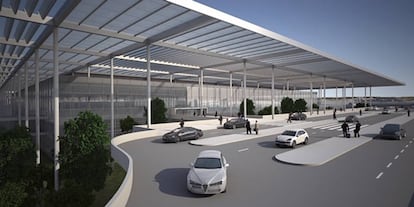
As separate units, Terminals 1, 2 and 3 fail to match T4 in efficiency, hence the idea of merging the three terminals to produce one building with one single entrance and a new processing area for passenger distribution, check-in, baggage reclaim and security, to be located in the old parking lot.
With the merging of the three terminals, there will be just one access point and one passenger processing area within a high-tech sustainable building. The new passenger distribution area will cover 140,000 square meters spread over three different levels. This area will lead into the existing terminal buildings that, after passing security, will become what is termed the “air zone” with an expanded shopping area.
The redesign will also include a new three-story car park for rental companies and VTC (chauffeured vehicle-for-hire services), with a 1,100-vehicle capacity, to be located just outside the new processing area. On the other side, there will be a new five-story parking lot for private vehicles, with around 2,250 spaces to complement the existing one. Once the roads and accesses have been designed, a gas station may be added.
Licenses and red tape
Aena, in which the Spanish state has a 51% share, plans to include the project in the Airport Planning and Regulation Document (DORA) for 2022-2026 once the latter has been approved by the government. But if the project is to be ready for presentation within two years, there is no time to lose: the design and engineering work has already been put up for tender and the contract won by a joint venture made up of Typsa and Vidal. Airlines have also been informed of the proposal, given that they will be funding the investment through taxes.
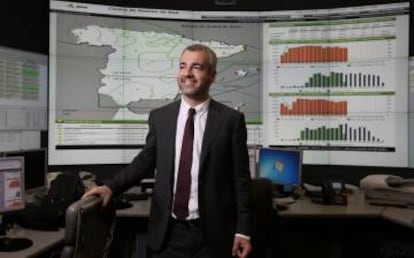
The project must also secure the mandatory reports from the National Commission of Markets and Competition (CNMC) and the General Directorate of Economic Policy, in addition to being submitted to the Airport Coordination Committee. Subsequently, the proposal will be sent to the General Directorate of Civil Aviation, which answers to the Public Works Ministry. According to Aena’s timetable, this report must be ready by March 2021 so it can move to the Cabinet for approval before September of that year. Only then can work on the as-yet unnamed terminal begin.
Another pending task is the demolition of the ghost building that stands at the entrance to T2, originally meant to accommodate the Sampol Hotel. The stalled 2007 project ended in a lawsuit that was won by Aena in which hotel’s investors were ordered to pay €9 million in damages, though the question of who is responsible for the building demolition was not addressed.
Meanwhile, plans for the expansion of T4 include extending the main building and the satellite northwards to solve passenger capacity issues, while simultaneously helping to develop the hub that the Iberia group aims to establish once it has completed the takeover of Air Europa, which is currently based in T2. The ultimate goal is to reach 120 operations per hour between T4 and the merged 1, 2 and 3 terminal, compared to the current average of 100.
The Madrid airport makeover is not the only one that Aena has in the pipeline. The company also plans to invest significantly in other airports around Spain, including El Prat in Barcelona.
Going solar
Madrid, a EU travel hub
The European air transportation sector beat all previous records in 2018 with 1.1 billion passengers passing through EU airports. Recent data published by Eurostat show that the number of travelers rose in all EU countries by 6% with respect to 2017.
With the fifth biggest population in Europe, Spain ranks third in passenger transit with 221 million passengers, just behind Germany with 222 million and some way behind the UK, with 272 million. Heathrow, London’s main airport, has the most passengers with 80 million, followed by Charles de Gaulle in Paris with 72 million, Schipol in Amsterdam with 71 million, Frankfurt with 69 million, Spain’s Adolfo Suárez Madrid-Barajas with 58 million and Barcelona-El Prat with 50 million.
In a bid to make the most of its undeveloped land lying close to Spain’s airports, Aena launched a real-estate scheme to build office space in 2018 while simultaneously boosting commercial and logistics activity on the back of public and private investment.
In March 2019, a solar-power project was approved with a proposed investment of €250 million, which will bring an estimated saving of 70% on Aena’s annual €75 million electricity bill. With the first phase already being developed by Cyme-Insae for €8.2 million, the solar initiative will cut the carbon footprint by 40%.
Besides Madrid and Barcelona, Aena also aims to install solar panels in around 20 of its 46 airports, selecting those with the most unexploited land and the most sun. The remainder of the real-estate scheme is still under development and is expected to be presented next year.
The 2022-2026 Strategic Plan includes the replacement of 100% of Aena’s cars with clean-energy vehicles by 2025, as well as the replacement of vehicles used for ground handling, which is contracted out. It also proposes an initial installation of 2,300 charging points for electric cars in the parking lot and sockets for aircraft.
English version by Heather Galloway.
Tu suscripción se está usando en otro dispositivo
¿Quieres añadir otro usuario a tu suscripción?
Si continúas leyendo en este dispositivo, no se podrá leer en el otro.
FlechaTu suscripción se está usando en otro dispositivo y solo puedes acceder a EL PAÍS desde un dispositivo a la vez.
Si quieres compartir tu cuenta, cambia tu suscripción a la modalidad Premium, así podrás añadir otro usuario. Cada uno accederá con su propia cuenta de email, lo que os permitirá personalizar vuestra experiencia en EL PAÍS.
¿Tienes una suscripción de empresa? Accede aquí para contratar más cuentas.
En el caso de no saber quién está usando tu cuenta, te recomendamos cambiar tu contraseña aquí.
Si decides continuar compartiendo tu cuenta, este mensaje se mostrará en tu dispositivo y en el de la otra persona que está usando tu cuenta de forma indefinida, afectando a tu experiencia de lectura. Puedes consultar aquí los términos y condiciones de la suscripción digital.
More information
Archived In
Últimas noticias
Welcome to the post-religion era: The idea of Christianity as the absolute truth has become obsolete
‘I thought you would like it’: The risky sexual practice popularized by TV shows and TikTok
The digitalization of tourism: ‘They promise experiences and gave us the worst possible one’
Mexican peso defies uncertainty with forecasts of a new period of stability in 2026
Most viewed
- Sinaloa Cartel war is taking its toll on Los Chapitos
- Oona Chaplin: ‘I told James Cameron that I was living in a treehouse and starting a permaculture project with a friend’
- Reinhard Genzel, Nobel laureate in physics: ‘One-minute videos will never give you the truth’
- Why the price of coffee has skyrocketed: from Brazilian plantations to specialty coffee houses
- Silver prices are going crazy: This is what’s fueling the rally
